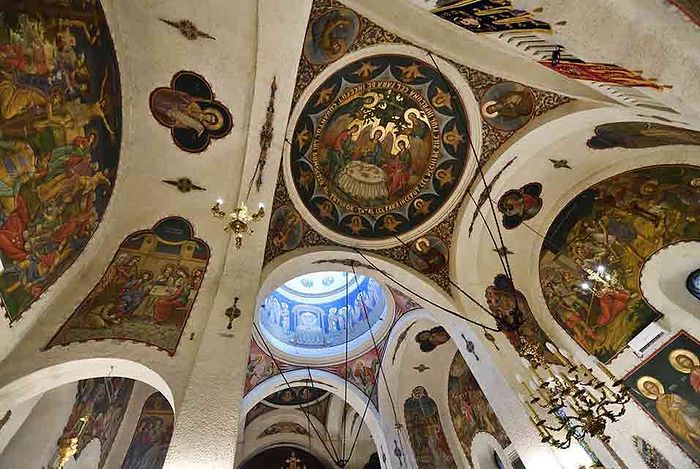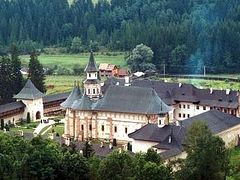Source: artdaily.org
November 13, 2017
 Orthodox church Sfantul Ioan Nou (Saint John the New), one of the moved churches, is pictured in Bucharest October 30, 2017. A bit bruised but still standing, old Orthodox churches can be found around Bucharest, having escaped the frenzied demolition of the Romanian capital in the 1980s ordered by ex-communist dictator Nicolae Ceausescu. Daniel MIHAILESCU / AFP.
Orthodox church Sfantul Ioan Nou (Saint John the New), one of the moved churches, is pictured in Bucharest October 30, 2017. A bit bruised but still standing, old Orthodox churches can be found around Bucharest, having escaped the frenzied demolition of the Romanian capital in the 1980s ordered by ex-communist dictator Nicolae Ceausescu. Daniel MIHAILESCU / AFP. A bit bruised but still standing, old Orthodox churches can be found around Bucharest, having escaped the frenzied demolition of the Romanian capital in the 1980s ordered by ex-communist dictator Nicolae Ceausescu.
At least 10 jewels of Romania's religious heritage from the 16th to 19th centuries survived due to an engineering tour de force: they were moved and hidden away.
Engineer Eugeniu Iordachescu was head of an institute at the time that was confronted with the architectural whims of Ceausescu and his wife Elena.
The couple had been impressed with Pyongyang, the North Korean capital, and got the idea to bulldoze the historic centre of Bucharest to make way for a government district dominated by a gigantic "House of the People".
The demolitions had already started when Ceausescu inquired about the width of Bucharest's main Kiseleff road.
"Someone said 50 metres (165 feet), another 70 metres. Then Ceausescu said, 'Make the boulevard 90 metres wide'. That had major implications. You had to destroy 20 metres more on each side," recalled Iordachescu, now 88 years old.
When the engineer went out to evaluate the impact of the destruction, he was enchanted by a small Orthodox church, Schitul Maicilor (meaning the Nuns' Convent), built in 1725.
"A jewel that had to be saved no matter the cost," he told AFP. "After months of wracking my brains, God enlightened me."
Inspired by "the waiter who carries glasses on a tray without spilling a drop", he said he imagined a "concrete tray" built under the church.
Detached from its foundations, the church was lifted and placed on rails and moved to a new location with the help of hydraulic jacks and winches.
...Read the rest at artdaily.org.



